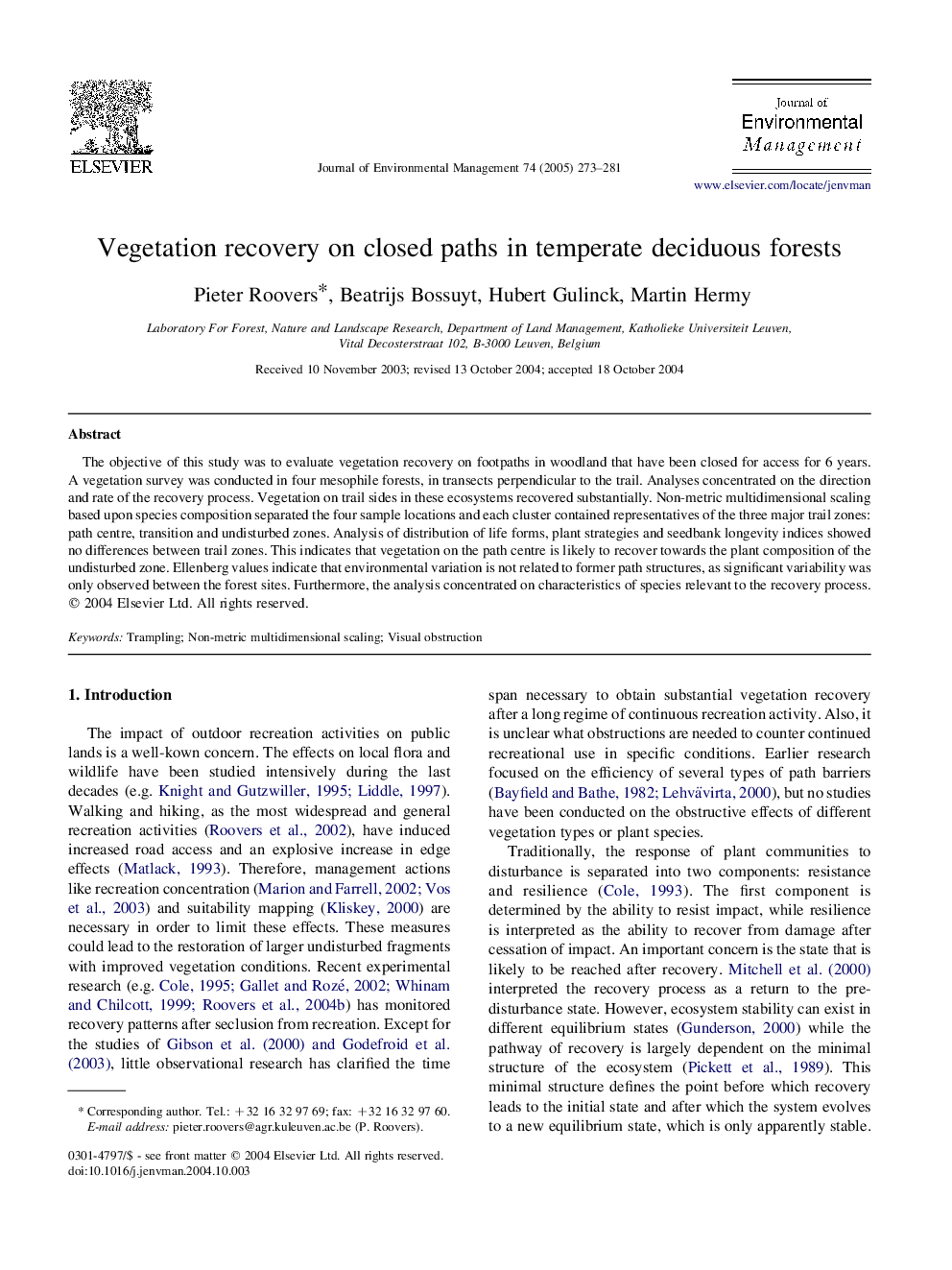| Article ID | Journal | Published Year | Pages | File Type |
|---|---|---|---|---|
| 10505976 | Journal of Environmental Management | 2005 | 9 Pages |
Abstract
The objective of this study was to evaluate vegetation recovery on footpaths in woodland that have been closed for access for 6 years. A vegetation survey was conducted in four mesophile forests, in transects perpendicular to the trail. Analyses concentrated on the direction and rate of the recovery process. Vegetation on trail sides in these ecosystems recovered substantially. Non-metric multidimensional scaling based upon species composition separated the four sample locations and each cluster contained representatives of the three major trail zones: path centre, transition and undisturbed zones. Analysis of distribution of life forms, plant strategies and seedbank longevity indices showed no differences between trail zones. This indicates that vegetation on the path centre is likely to recover towards the plant composition of the undisturbed zone. Ellenberg values indicate that environmental variation is not related to former path structures, as significant variability was only observed between the forest sites. Furthermore, the analysis concentrated on characteristics of species relevant to the recovery process.
Related Topics
Physical Sciences and Engineering
Energy
Renewable Energy, Sustainability and the Environment
Authors
Pieter Roovers, Beatrijs Bossuyt, Hubert Gulinck, Martin Hermy,
